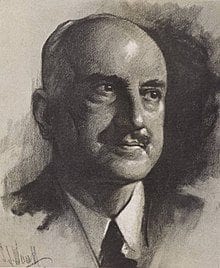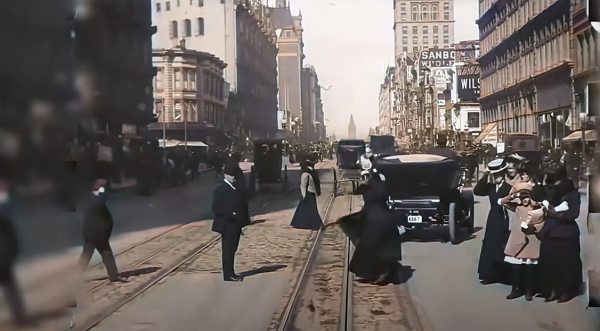The First Battle of Bud Dajo, also known as the Moro Crater Massacre, was a counterinsurgency action fought by the United States Army against the Moro people in March 1906, during the Moro Rebellion in the southwestern Philippines.[3][4][5] Whether the occupants of Bud Dajo were hostile to U.S. forces is disputed, as inhabitants of Jolo Island had previously used the crater, which they considered sacred, as a place of refuge during Spanish assaults.[6] Major Hugh Scott, the district governor of Sulu Province, where the incident occurred, recounted that those who fled to the crater “declared they had no intention of fighting, – ran up there only in fright, [and] had some crops planted and desired to cultivate them.”[7]
The description of the engagement as a “battle” is disputed because of both the overwhelming firepower of the attackers and the lopsided casualties. Author Vic Hurley wrote, “By no stretch of the imagination could Bud Dajo be termed a ‘battle'”.[8] Mark Twain commented, “In what way was it a battle? It has no resemblance to a battle … We cleaned up our four days’ work and made it complete by butchering these helpless people.”[9] A higher percentage of Moros were killed (99 percent) than in other incidents now considered massacres, such as the Wounded Knee Massacre. Some of those killed were women and children. Moro men in the crater who had arms possessed melee weapons. While fighting was limited to ground action on Jolo, the use of naval gunfire contributed significantly to the overwhelming firepower brought to bear against the Moros.
During the engagement, 750 men and officers, under the command of Colonel J.W. Duncan, assaulted the volcanic crater of Bud Dajo (Tausūg: Būd Dahu), which was populated by 800 to 1,000 Tausug villagers. According to Hermann Hagedorn (who was writing prior to World War II), the position held by the Moros was “the strongest which hostiles in the Philippines have ever defended against American assault.”[10] Although the engagement was a victory for the American forces, it was also an unmitigated public-relations disaster. Whether a battle or massacre, it was certainly the bloodiest of any engagement of the Moro Rebellion, with only six of the hundreds of Moro surviving the bloodshed.[11] Estimates of American casualties range from fifteen[12] to twenty-one killed and seventy-five wounded.[11]
The first battle at Bud Dajo took place during the final days of General Leonard Wood’s term as governor of the Moro Province. Wood’s term was a time of great reform. Some of these reforms, including the abolition of slavery and the imposition of the cedula, as a registration poll tax, were unpopular with his Moro (Muslim) subjects. The cedula was especially unpopular, since the Moros interpreted it as a form of tribute, and according to Vic Hurley, Moro participation in the cedula was very low, even after 30 years of American occupation.[13] These reforms, coupled with the general resentment of foreign Christian occupiers, created a tense and hostile atmosphere during Wood’s tenure, and the heaviest and bloodiest fighting during the American occupation of Mindanao and Sulu Province took place under his watch.
Although Moro hostilities died down during the latter days of Wood’s governorship (the tenure of Wood’s replacement, General Tasker H. Bliss, was a period of relative peace), it was in this tense atmosphere of Moro resentment that the events leading to the Battle of Bud Dajo played out. According to US President Theodore Roosevelt’s friend and biographer Hermann Hagedorn, the Moros living in Bud Dajo were “the rag-tag-and-bobtail remnants of two or three revolts, the black sheep of a dozen folds, rebels against the poll tax, die-hards against the American occupation, outlaws recognizing no datto (ruler) and condemned by the stable elements among the Moros themselves.”[10] Vic Hurley, author of Swish of the Kris, adds that “the causes contributing to the battle of Bud Dajo were resentment over the curtailing of slave-trading, cattle-raiding, and women-stealing privileges of the Moros of Sulu.”[11] In contrast, Major Hugh Scott describes the occupants of Bud Dajo as harmless villagers seeking refuge from the upheaval on Jolo caused by the actions of American forces.[14]




